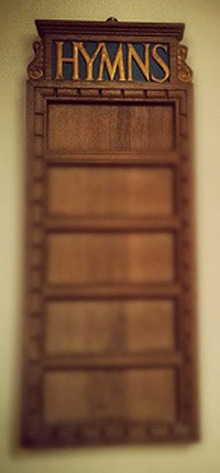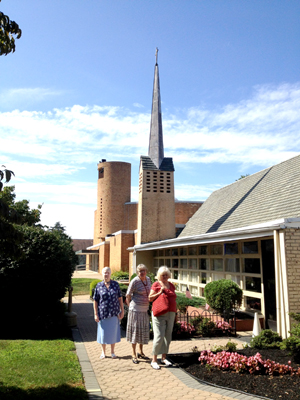 Today there are just three songs outside of church that people sing together—the National Anthem, Happy Birthday, and whatever the pop star that people paid to hear is belting out at a concert.
Today there are just three songs outside of church that people sing together—the National Anthem, Happy Birthday, and whatever the pop star that people paid to hear is belting out at a concert.
Singing is fun. Yet, once we graduate from lower levels of school, many of us never again experience group singing. Recognizing this, some movie theaters sponsor movie singalongs to favorites like Sound of Music or My Fair Lady.
The power of music is the power to surprise and delight.
We remind you of a favorite video link which illustrates this.
Here’s another from a different part of the world.
Songs create cultural ties. Many of the commenters to the Welsh choir video wrote that they enjoyed the Welsh hymn so much they memorized it. Otherwise, they spoke not a word of Welsh. The second video shows how good music knows no cultural bounds.
Our Ambassadors gathered for Sunday morning brunch recently and someone mentioned a clock, which had been her father’s prize possession. We broke into song, My Grandfather’s Clock, with an African member looking on in amusement. “Tick-tock, tick-tock.” My Grandfather’s Clock was written in 1876, by an American Civil War songwriter Henry Clay Work after a visit to England. 136 years later, we could all sing it together, part of our common culture.
Similarly, the one meeting Redeemer had with Bishop Claire Burkat, we considered such a success that as our members left they broke into song which traveled with them down the elevator from the synod offices and across the parking lot to waiting cars. This time the song was from African culture!
Music was part of the magic of Redeemer’s ministry that was binding our diverse groups. We used eight or more hymns in our worship. Frequent repetition of select songs allowed for commonality. Soon Africans could sing I Cast All My Cares Upon You and Americans could sing Bwana Awabariki. We often sang popular hymns alternating languages and soon we could sing the chorus to Jesus Loves Me or How Great Thou Art in either language without realizing which language we wee singing!
One Sunday we had a guest preacher. He mentioned in his sermon the hymn Just As I Am. He started to read the words. The congregation began singing the hymn a cappella from memory. The hymn is part of our culture. Oddly the pastor seemed annoyed at the congregation’s initiative.
Church is one of very few places where people gather weekly to enjoy singing. Let’s take advantage of our strong points! Let the music of your church come from the people and shape your ministry.







